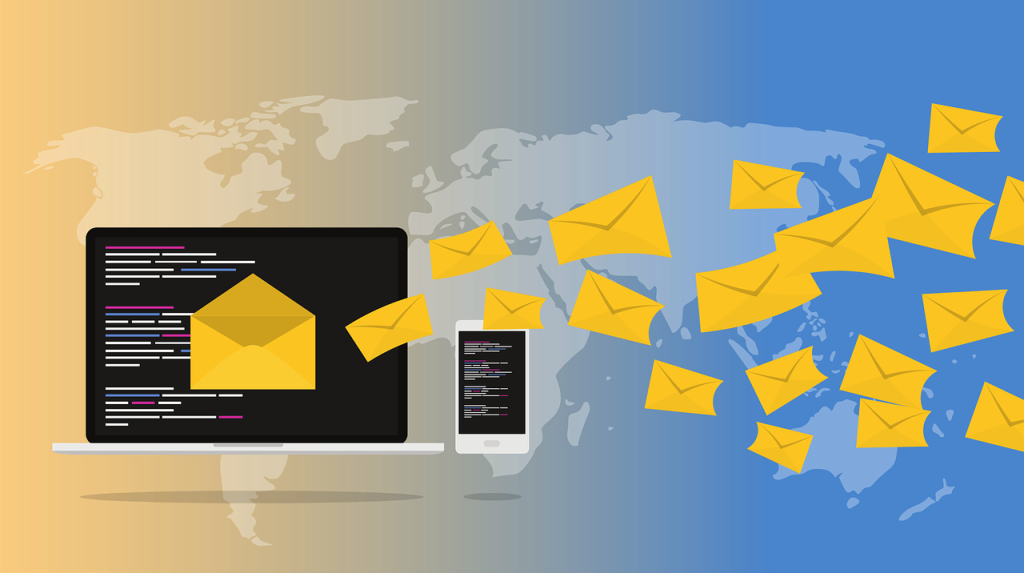Email marketing is a powerful tool for businesses and individuals looking to reach their audience effectively. It provides direct access to people’s inboxes, allowing for personalized communication, customer engagement, and sales growth. This guide will walk you through the fundamentals of email marketing, best practices, and strategies to achieve success.

What is Email Marketing?
Email marketing involves sending emails to a group of subscribers with the goal of informing, engaging, or selling products and services. It is used for various purposes, including:
- Promotional campaigns – Sending discount offers, new product launches, and special promotions.
- Newsletters – Providing updates, educational content, or industry news.
- Transactional emails – Order confirmations, shipping updates, and password resets.
- Automated email sequences – Follow-up emails, onboarding series, and cart abandonment reminders.
With the right strategy, email marketing can improve customer relationships, increase brand awareness, and boost revenue.
Why is Email Marketing Important?
- High ROI – Email marketing has one of the highest returns on investment (ROI) compared to other marketing channels.
- Direct Communication – Emails land directly in your audience’s inbox, ensuring they see your message.
- Automation Opportunities – Automated email sequences save time and nurture leads efficiently.
- Customization & Personalization – Tailored messages based on user behavior increase engagement.
- Analytics & Performance Tracking – Track open rates, click-through rates, and conversions to optimize campaigns.
Setting Up Your Email Marketing Strategy
1. Define Your Goals
Before starting, identify what you want to achieve. Some common goals include:
- Building brand awareness
- Increasing sales and revenue
- Growing your email list
- Engaging with your audience
- Driving traffic to your website
2. Choose an Email Marketing Platform
To manage email campaigns efficiently, use an email marketing service. Popular options include:
- Mailchimp
- ConvertKit
- ActiveCampaign
- Constant Contact
- HubSpot Email Marketing
These platforms offer tools to design emails, segment subscribers, automate campaigns, and analyze performance.
3. Build Your Email List
An engaged email list is the foundation of successful email marketing. Here’s how to grow your list:
- Offer lead magnets – Free ebooks, checklists, or webinars in exchange for email sign-ups.
- Use sign-up forms – Place opt-in forms on your website, blog, and social media.
- Run contests and giveaways – Encourage users to subscribe for a chance to win prizes.
- Leverage social media – Promote your email list through social media channels.
- Collect emails at events – Gather emails at networking events, webinars, and conferences.
4. Segment Your Audience
Segmenting your email list improves engagement by sending relevant messages to different groups. Common segmentation strategies include:
- Demographics – Age, location, gender, occupation.
- Behavior – Purchase history, website activity, email interactions.
- Engagement level – Highly active subscribers vs. inactive users.
- Interests – Preferences based on survey responses or past interactions.
Creating Effective Email Campaigns
1. Craft Engaging Subject Lines
Your subject line determines whether recipients open your email. Best practices include:
- Keeping it short (6–10 words).
- Creating curiosity or urgency.
- Personalizing with the recipient’s name.
- Avoiding spammy words (e.g., “Free money,” “Guaranteed win”).
2. Write Compelling Email Copy
The body of your email should be clear, engaging, and actionable.
- Use a conversational tone to connect with readers.
- Keep paragraphs short for easy readability.
- Include a clear call-to-action (CTA).
- Personalize content based on user preferences.
3. Design for Readability
Well-structured emails enhance user experience.
- Use bullet points for easy skimming.
- Add images and buttons for visual appeal.
- Ensure mobile-friendliness for optimal display on smartphones.
4. Optimize Email Timing
The best time to send emails varies by audience. Test different sending times and analyze results. Generally, emails sent on:
- Tuesdays and Thursdays see higher open rates.
- Morning (8–10 AM) and early afternoon (1–3 PM) perform well.
Email Marketing Automation
Automation streamlines email campaigns and increases efficiency. Common automated emails include:
- Welcome emails – Sent when someone subscribes to introduce your brand.
- Drip campaigns – A series of emails sent over time to nurture leads.
- Cart abandonment emails – Reminders to complete purchases.
- Re-engagement emails – Sent to inactive subscribers to encourage interaction.
Using automation ensures timely and relevant communication with your audience.
Tracking and Analyzing Email Performance
To measure success, track key email marketing metrics:
- Open rate – Percentage of recipients who open your email.
- Click-through rate (CTR) – Percentage of recipients who click on links inside your email.
- Conversion rate – Percentage of recipients who complete a desired action.
- Bounce rate – Percentage of emails that fail to reach inboxes.
- Unsubscribe rate – Percentage of users who opt out of your list.
Regular analysis helps you refine your strategy for better results.
Best Practices for Email Marketing Success
- Follow Email Compliance Laws – Adhere to laws like GDPR, CAN-SPAM, and CCPA by getting explicit consent before sending emails.
- Avoid Buying Email Lists – Gaining subscribers organically ensures higher engagement.
- Keep Your Email List Clean – Regularly remove inactive subscribers to maintain a healthy list.
- A/B Test Campaigns – Test different subject lines, designs, and content to optimize performance.
- Provide Value in Every Email – Ensure each email benefits the reader, whether through information, discounts, or entertainment.
Conclusion
Email marketing is a cost-effective way to build relationships, increase brand loyalty, and drive sales. By following best practices and continuously optimizing your strategy, you can create successful email campaigns that engage and convert your audience. Whether you’re a beginner or an experienced marketer, focusing on delivering value and personalization will help you maximize results.
FAQs
1. How often should I send emails?
It depends on your audience. Weekly or biweekly emails work well for most businesses, but always monitor engagement and adjust accordingly.
2. What is the best email marketing platform for beginners?
Mailchimp, ConvertKit, and Constant Contact are beginner-friendly and offer automation, templates, and analytics.
3. How do I increase my email open rates?
Use compelling subject lines, personalize emails, send at optimal times, and clean your email list regularly.
4. Can I use email marketing for free?
Yes, platforms like Mailchimp offer free plans with limited features. As your list grows, upgrading to a paid plan is recommended.
5. How do I write a good call-to-action (CTA)?
Make it clear, concise, and action-oriented, such as “Shop Now,” “Get Your Free Guide,” or “Sign Up Today.”

Article by:
Oyejobi Adeola, founder of NiveDigital & NiveDigital Academy, is a top expert in SEO and digital marketing.
With over a decade of experience, he has helped businesses grow through advanced SEO strategies and trained hundreds of students to succeed online.
His insights have been featured in top industry publications.

